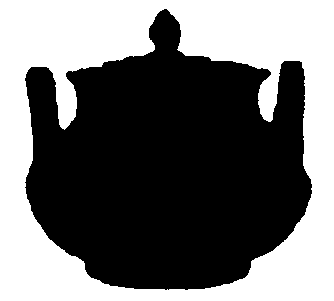
        
©1999-2015
Wisconsin Pottery Association
P.O. Box 705
Madison WI 53701-0705
Website Content Use

|
The following article appeared in WPA
Press, Vol. 7, January 2001
Asking the WPA for Pottery Values?
by Tim Zinkgraf - Webmaster
One of the goals of the Wisconsin Pottery Association is to educate the
public about pottery and one part of this education is the value. We get many
requests for values of pottery on the website and we try our best to give an
idea of the price range of a piece. We canít give you a definitive answer
because the market place is changing all the time, or reference books may not be
available to the person trying to provide the appraisal, or not available at all
for the piece in question.
Remember that this is a volunteer organization. We volunteer our time &
resources to the organization. If you canít put some time into describing or
getting pictures of your pottery, we canít spend the extra time to find a
value. To give you an answer, we need you to educate us about your piece. If you
do the following, youíll increase the chances of us being able to place a
value on your piece or to give you more background.
1. Send us a picture!
A picture is worth a thousand words! Many times we can identify a piece by just
looking at it because of the distinctive style of many potteries & pottery
lines. This also helps in identifying reproductions. Send us a picture of the
front & the back, if they are dramatically different. Also send us a picture
of the bottom. The bottom of the piece can give a lot of clues about the pottery
& the quality of the piece. When sending pictures, use the JPEG or JPG
format & try to keep them under 200k.
2. Accurately Describe the Piece
If you canít send a picture, then you need to give a very detailed description
of the piece. Saying "I have a white Haeger vase #207" makes it
unlikely that a value can be found. Start by answering the following questions:
How tall? How wide? Vase or bowl? Color of the clay (if visible)? How is it
glazed? Matt or glossy finish? Any patterns or objects (flowers, birds)? Is the
pattern painted on under the glaze or over the glaze? Is the pattern molded into
the piece, or incised in? Is the bottom flat, indented or grounded? Any marks or
numbers? Even with a number, it might be hard to identify a piece. Many
potteries used the same number on dramatically different pieces. Sometime value
books donít list prices by numbers, which means we would have to search the
whole book for that number.
3. What do you know about the piece?
If you got that Roseville vase from your grandmother and she had it back in the
50ís, then we probably donít have to worry about reproductions. If, however,
you found the piece at an antique mall and it was labeled Roseville, then it
might raise doubts Ėespecially without a picture. What part of the country did
the piece come from? Any information that you can give can be helpful. So youíve
done all of the above, does that guarantee that weíll be able to identify and
value your piece? Unfortunately, not. Sometimes you just need to hold a piece to
give it a value or to figure out what it is. Even at our monthly meeting, some
pieces stump every member. If you donít have a picture, it will depend on the
pottery. For the more commonly collected potteries like Roseville or Weller,
there are several reference books and many people with knowledge of it. For
pottery like Haeger, Abingdon or hyalyn, they made hundreds of different items
& there may be few reference books & few members who actively collect
them. Again, remember that we are a volunteer organization and can many times
provide a lot of information that is not available anywhere online, but we donít
know everything.
WPA Press Newsletters
|








